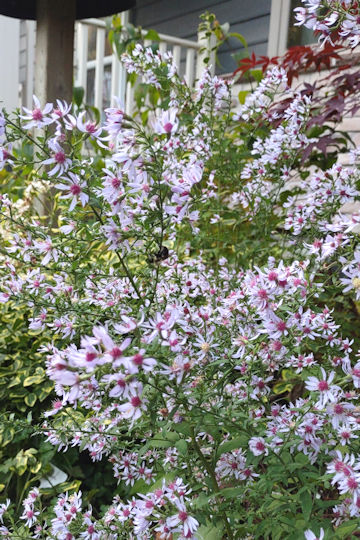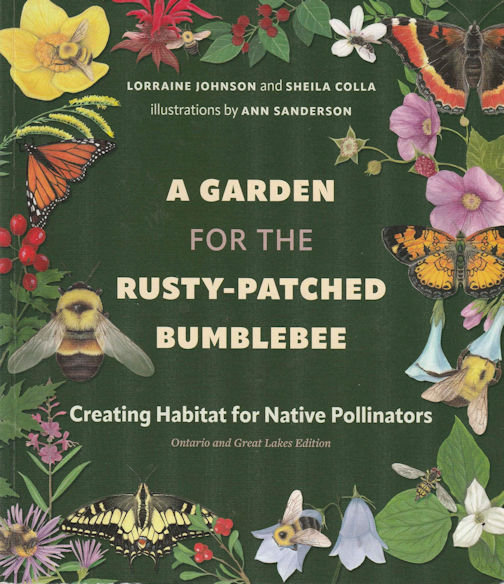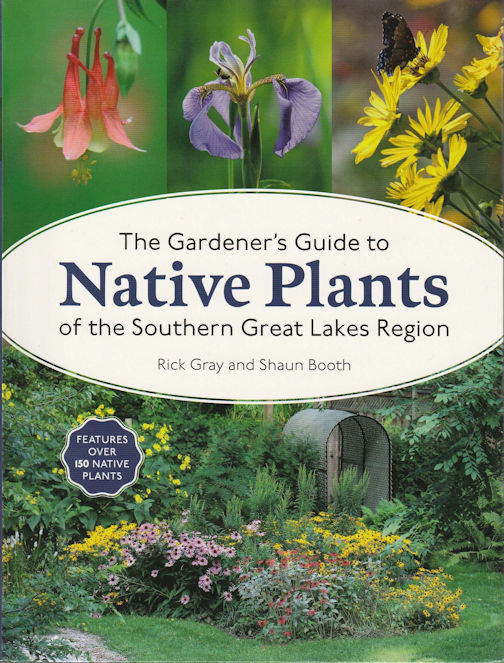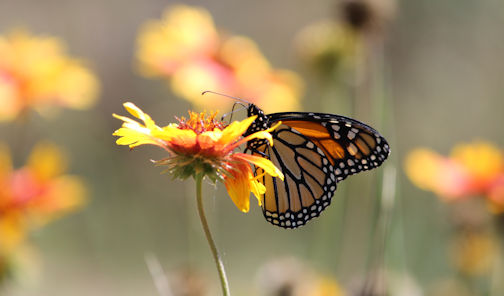NIMBY: Nature In My Back Yard – Right plant, right place

It’s late October as I write this column and I think I saw the last two bumblebees in my yard today which makes me a little sad. The Heart-leaved aster is the last blooming wildflower in my gardens and the sluggish bumblebees crawled over the blooms to consume the last of the nectar. Enjoying the last signs of pollinator activity, I resolve to grow more Heart-leaved aster next year.
A very cold and sluggish bumblebee in Blair’s Grove, Oct. 26 2025
Perhaps you’re intending to add native plants to your gardens next year or expand existing plantings. How do you determine what to grow and where to plant it?
“Right plant, right place” is a gardening principle pioneered by British garden designer and author Beth Chatto who promoted planting species in conditions similar to their native habitats. The increasing popularity of native plants in urban gardens has resulted in a great variety of very accessible resources. This month, I would like to share a few of my favourites.
First you need to know your eco-region (not to be confused with a hardiness zone).
An eco-region is a large distinct area defined by unique climate, geology, flora, fauna and soil. A hardiness zone is much simpler based on average annual extreme winter temperatures and is used mainly to determine which plants can survive the cold.

You might be surprised to learn that Bruce County is part of the Manitoulin-Lake Simcoe Eco-region which encompasses Manitoulin Island, Owen Sound, Barrie, Stratford, Kitchener-Waterloo, Guelph, Oshawa, Peterborough, the Kawarthas and the Kingston/Belleville area.
Pollinator Partnership Canada provides planting guides for all Canadian eco-regions as free downloadable files:
pollinatorpartnership.ca/en/ecoregional-planting-guides. Each document details the specific qualities of the eco-region, introduces the pollinators and gives information to help develop pollinator habitat. Most importantly, it provides a list of trees, flowers and grasses that are native to the area.
Several pages of charts include information on height, colour, flowering season, light and moisture requirements and a very general idea of which pollinators each plant attracts.
If you’d like more specific information on native plants, two recent publications are very helpful: “A Garden for the Rusty-Patched Bumblebee” by Lorraine Jonson and Sheila Colla, published by Douglas and McIntyre in 2022, and “The Gardener’s Guide to Native Plants of the Southern Great Lakes Region” by Rick Gray and Shaun Booth, published by Firefly Books in 2024.

The latter features fewer plants but gives more details with photos of the leaves, flowers and seeds. It also provides information on propagation for gardeners interested in growing their own plants.

Both present good descriptions of the plants, themselves, and information on their value to wildlife and pollinators, in particular, by listing the species that use the plants for food and as hosts. I have made great use of my copies in planning habitat gardens and highly recommend them both.
As you learn about which native plants will be suitable for your property and start your plant list, give some thought to choosing species that will provide food for insects in spring, summer and fall and plan accordingly. I created a chart which I use when planning a new flower bed and I’ve included it for your use:
Pollinator Plant Worksheet.
In general terms, when planning a garden, plant three specimens of three different species for each of the three growing seasons which makes for nine spring plants, nine summer plants and nine fall plants. Add three native grasses for shelter and a basic garden will contain 30 plants.
Group plants of the same species close together to reduce the energy an insect expends while foraging.
Johnson’s book contains some sample garden designs, and several organizations list many resources on their websites, such as Pollination Guelph,
www.pollinationguelph.ca; Blooming Boulevards,
www.bloomingboulevards.org/; and Pollinator Partnership Canada,
pollinatorpartnership.ca/en.
There’s no shortage of useful and inspirational material for gardeners wanting to nurture a closer relationship with the natural world. As everyone knows, good relationships don’t happen by accident; they require work. Now is the perfect time to get started.
 Written By
Written ByChristine Roberts is a retired elementary school teacher, president of Huron Bruce Nature, member of the Ripley and District Horticultural Society, volunteer for the David Suzuki Foundation, VON volunteer fitness leader and a passionate lover of nature.

 It’s late October as I write this column and I think I saw the last two bumblebees in my yard today which makes me a little sad. The Heart-leaved aster is the last blooming wildflower in my gardens and the sluggish bumblebees crawled over the blooms to consume the last of the nectar. Enjoying the last signs of pollinator activity, I resolve to grow more Heart-leaved aster next year.
It’s late October as I write this column and I think I saw the last two bumblebees in my yard today which makes me a little sad. The Heart-leaved aster is the last blooming wildflower in my gardens and the sluggish bumblebees crawled over the blooms to consume the last of the nectar. Enjoying the last signs of pollinator activity, I resolve to grow more Heart-leaved aster next year.


Related Stories
No related stories.